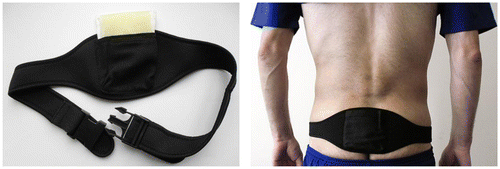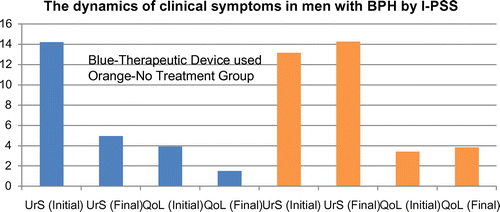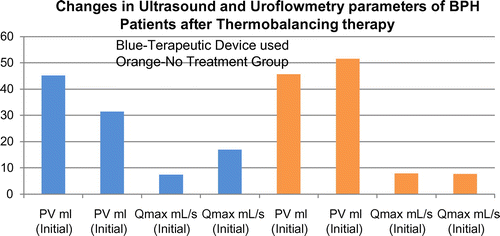Figures & data
Figure 1. The therapeutic device alone (on the left) and the device tightly applied to the coccyx area in the projection of the prostate.

Figure 2. The changes of urinary symptoms by International Prostate Symptom Score (IPSS) and quality of life (QoL) in 124 patients with BPH on Thermobalancing therapy and in 124 men in the control group at the beginning and at the end of the six-month period.

Figure 3. The changes in prostate volume (PV) ml and uroflowmetry maximum urinary flow rate (Q max) mL/s in 124 men with BPH on Thermobalancing therapy and in 124 men in the control group at the beginning and at the end of the six-month period.

Table 1. The changes in prostate volume (PV) ml, uroflowmetry (maximum urinary flow rate (Qmax) mL/s and International Prostate Symptom Score (IPSS) in men with BPH and (PV > 60 ml) before and after Thermobalancing therapy
